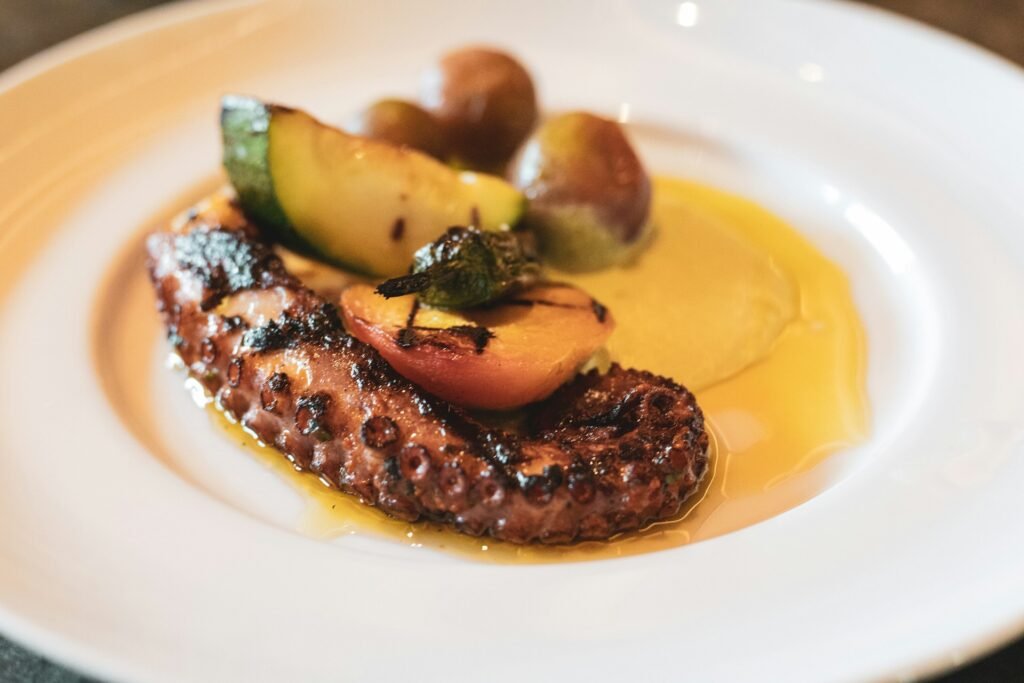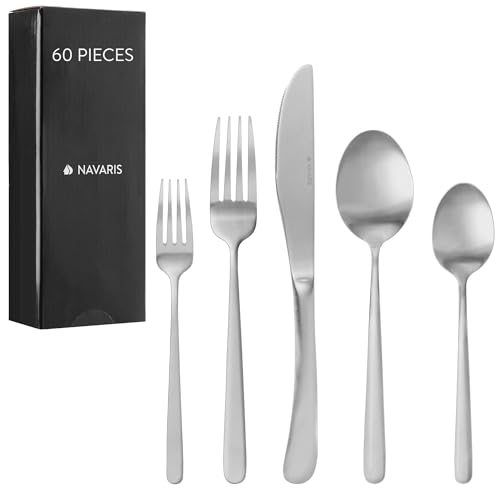This post may contain affiliate links which means we may receive a commission at no cost to you, if you make a purchase through a link. Please see our full disclosure for further information.
Are you ready to impress at your next fancy dinner? Knowing the basics of fine dining can help you feel confident and comfortable, whether it’s a special date or an important event. This guide will walk you through the proper etiquette for a five-course meal, from table settings to eating each course.
Understanding the Table Setting
The table setting might seem confusing at first, but it’s organized to help you navigate the meal. Here’s a breakdown:
- Tablecloth: A white tablecloth shows that the restaurant is upscale.
- Napkin: A simple, elegant napkin is placed in the center of your plate.
- Bread Plate: Located to your left, it’s smaller than your main plate.
- Forks: On the left side, forks are arranged in the order you’ll use them, from the outside in. Usually, you’ll see a salad fork and a main course fork.
- Knives and Spoons: On the right side, knives are set with the blades facing inward. You’ll find a knife for salad, a soup spoon, and a main course knife. The oyster fork is the only fork on the right.
Remember the BMW rule: Bread (left), Main course (center), and Water (right) to help you know what is yours.
Choosing the Right Glass
There may be many glasses on the table. Here’s what they’re for:
- Water Glasses: Usually two glasses for water. Stemless glasses are more common in less formal restaurants.
- Wine Glasses: White wine glasses have a thinner bowl, while red wine glasses have a bigger bowl.
- Champagne Flute: This tall, thin glass keeps champagne bubbles and drinks cold.
- Coupe: A beautiful, classic glass that is sometimes used for champagne or cocktails.
Napkin Know-How
Using your napkin correctly is key to good manners:
- Unfold your napkin below the table.
- If it’s large, fold it in half with the open side facing you.
- Never tuck it into your shirt like a bib.
- If you leave the table, place the napkin on your chair to show you’ll be back.
- Use your napkin to dab, not wipe.
- When you’re done, gently fold the napkin and leave it on the left side of your plate.
What if you drop your napkin? Ask for a new one.
Bread and Olives
Bread is often served before the main courses. Here’s how to enjoy it:
- Break off a piece with your fingers.
- Place it on your bread plate.
- Dip it in olive oil or spread with butter.
- Eat one piece at a time.
If olives are served, remember:
- Use your fingers to bring the olive to your mouth.
- Take out the pit the same way you put it in.
- Place the pit on the left side of your plate.
Salad Savvy
The way you eat your salad depends on what’s in it. If it’s a puree texture, use a fork. If it has bigger pieces, use a knife and fork.
- Hold your fork in your left hand and your knife in your right.
- Cut a piece of salad with your knife.
- Use your fork to guide the food into your mouth.
Elbows should be close to your body while eating.
Soup Strategies
The type of spoon you use depends on the soup. Broth soups use an oval-shaped spoon.
- Dip the spoon away from you.
- Sip from the side of the spoon.
- Don’t blow on your soup to cool it down.
- When resting, leave the spoon in the bowl.
- When finished, place the spoon in the bowl at the 12 to 6 position.
Fish Finesse
Use a fish knife and fork if available. If not, a regular knife and fork will do.
- Use the knife to gently separate the fish.
- Use the fork to bring the fish to your mouth.
Main Course Mastery
For meat, always use a knife and fork.
- Cut a piece of meat.
- Place the food on the tines of the fork.
- Bring the fork to your mouth.
If something gets stuck in your teeth, excuse yourself and take care of it in private.
Dessert Decorum
Dessert often comes with a special fork and spoon. Use them based on the dessert’s texture. If it’s soft, a fork alone may do.
- Use the fork and spoon to cut and scoop.
- Take small bites and enjoy.
Final Touches
Here are some extra tips to keep in mind:
- Don’t talk with food in your mouth.
- Take sips of water from the same spot on the glass.
- Don’t groom yourself at the table.
- Place your utensils in the correct position to signal you are done.
Conclusion
By following these etiquette tips, you’ll be ready to handle any fine dining experience with grace and confidence. Remember, good manners are about making others feel comfortable and enjoying the meal.
Want to learn more about etiquette? Consider taking a course or reading a book to improve your skills.
Ritz Paris | 5-Star luxury hotel in Paris
La Réserve Hotel & Spa | 5 Star Luxury Hotel in Paris
Five-Star | Four Seasons Hotel George V, Paris
Uncover further inspiration in our blog.





















